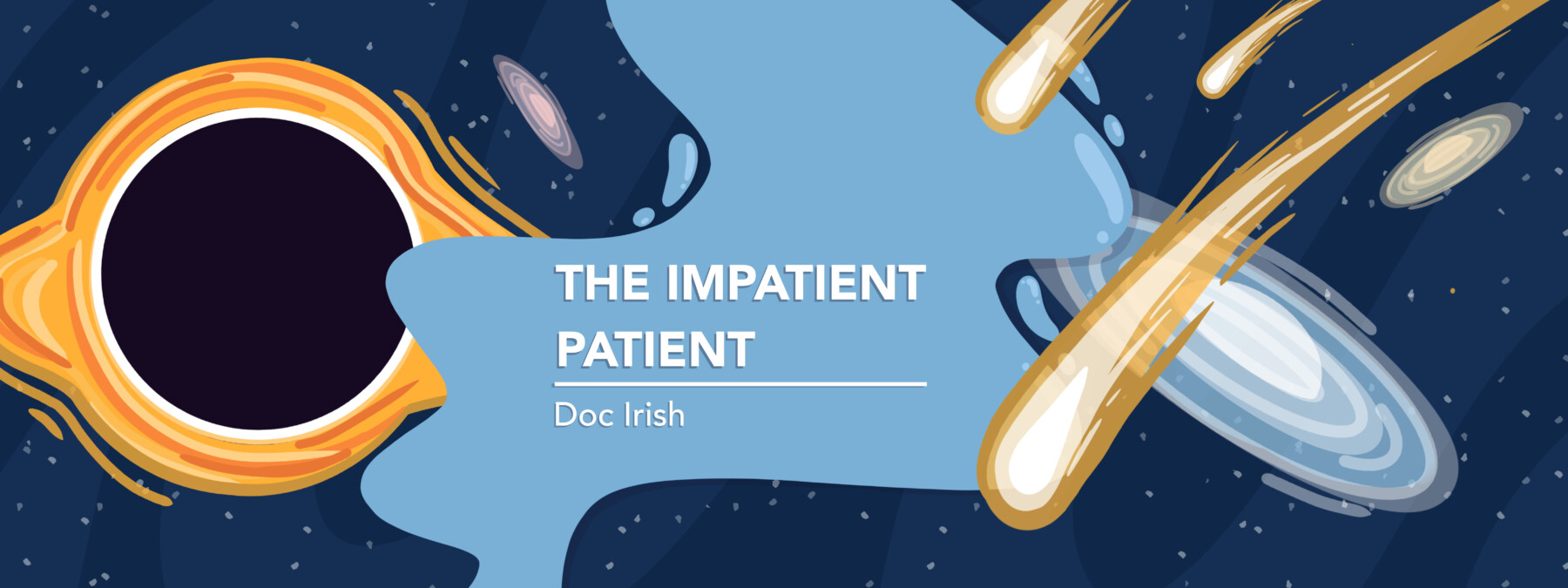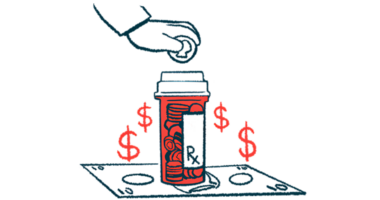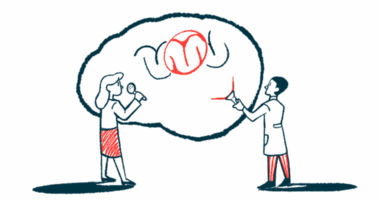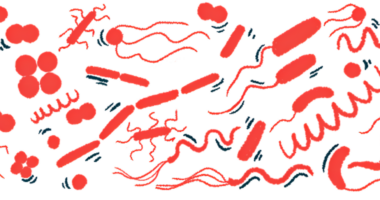We need to challenge the current Parkinson’s disease models
Breakthroughs will happen when we rethink the model entirely

Many ancient civilizations believed that the Earth was flat. This worldview was tethered to the simple, familiar image of a flat plane with edges you could fall off.
Of course, the Earth was never flat, but thousands of years ago, it may have seemed that way. That was the trap.
Today, when I look at Parkinson’s research and the medical ecosystem around it, I can’t help but feel we’re making the same mistake. We’re clinging to an outdated model of the world — not because it’s accurate, but because it’s familiar, institutionally accepted, and easier to measure.
The flat map of Parkinson’s
Look at most Parkinson’s research over the past two decades and you’ll see an obsessive focus on mechanism-of-action drug discovery, gene targets, receptor interactions, alpha-synuclein clumps, and intricate molecular pathways.
These are important, yes — but also incomplete. It’s like studying the wind by analyzing individual blades of grass. You may understand how the grass moves but miss the wind entirely.
This hyperfocus has trapped us in an overly reductionist mindset: one disease, one drug, one mechanism. Meanwhile, Parkinson’s continues to behave more like a systemic pattern-disruption disorder — one that affects movement, cognition, mood, sleep, gut function, sensory processing, and more.
It’s not a single dot on a map. It’s the map itself that’s warped.
Breakthroughs come from perspective shifts
History tells us that breakthroughs happen when we challenge the model, not just tweak it.
- Copernicus disrupted astronomy by placing the sun at the center of the universe, not the Earth.
- Darwin disrupted biology by redefining change as gradual evolution, not static design.
- Einstein disrupted physics by showing that space and time bend.
- Semmelweis saved lives by hypothesizing that contaminants on medical students’ hands (not bad air) caused infection.
None of these were merely technical tweaks. They were conceptual upgrades.
In Parkinson’s, we’re still waiting for that kind of breakthrough — a reframe that shows us we’ve been looking at the condition sideways, or upside down.
And I think we’re overdue.
What are we missing?
Let me ask a dangerous question: What if the model is wrong?
What if Parkinson’s is not primarily a dopamine disease, but a sensory integration disorder that starts decades before motor symptoms appear?
What if it’s less about neurons dying and more about networks misfiring — as if the brain’s timing and feedback loops start to desynchronize like a jazz band losing the beat?
What if we stopped looking at Parkinson’s through a microscope and started looking through a systems lens, where perception, movement, emotion, and attention are all part of the same dynamic pattern?
What if we already have most of the raw ingredients for a breakthrough — wearable sensors, haptic feedback, immersive visual tech, patient engagement platforms — but we’re not combining them because we’re still stuck thinking the world is flat?
Beyond the molecule: The human feedback loop
I’m not saying we should abandon pharmaceutical research and development. We need drugs. But we also need to expand our model of action — from molecules to mechanisms, yes, but also to dynamics, behaviors, and sensory experiences.
Therapy doesn’t have to mean pills.
What if we created adaptive stimulation systems that retrain the nervous system using light, sound, touch, rhythm, and feedback? What if we could nudge the brain into new patterns the same way we rehabilitate a muscle or recalibrate a thermostat?
This isn’t sci-fi. It’s already happening in adjacent fields: neurofeedback, virtual reality rehab, sensory processing interventions for autism, coordinated reset stimulation for tinnitus.
But Parkinson’s is still stuck in the old models: drug-or-nothing, symptom management over systems training, data from clinics instead of real lives.
We don’t just need a new therapy. We need a new worldview.
Turning the telescope around
Here’s the irony: Many of history’s biggest mistakes weren’t due to a lack of intelligence but rather a lack of imagination. Everyone had access to the same evidence, but not everyone knew how to see it.
We must turn the telescope around, looking not just deeper into the brain, but wider across experience.
That means empowering patients to cocreate and cotest new tools. It means treating perception, rhythm, coordination, and feedback as first-class citizens in our models of disease. It means building dynamic therapies, not static prescriptions.
Most of all, it means seeing Parkinson’s not as a linear problem with a linear cure, but as a multidimensional challenge that requires a multisensory, multiperspective solution.
Time to redraw the map
For centuries, maps depicted sea monsters at the edges — places where the known world ended. That’s how I feel about Parkinson’s innovation today. We’re afraid to move beyond the edges of the known, because we’ve mistaken the map for the territory.
But real progress doesn’t happen within the lines. It happens when we realize the Earth was never flat — and neither is the brain.
So, let’s stop waiting for a single miracle molecule and start reimagining the shape of the problem.
Because sometimes, to find the breakthrough, you first have to change how you see the world.
Note: Parkinson’s News Today is strictly a news and information website about the disease. It does not provide medical advice, diagnosis, or treatment. This content is not intended to be a substitute for professional medical advice, diagnosis, or treatment. Always seek the advice of your physician or another qualified health provider with any questions you may have regarding a medical condition. Never disregard professional medical advice or delay in seeking it because of something you have read on this website. The opinions expressed in this column are not those of Parkinson’s News Today or its parent company, Bionews, and are intended to spark discussion about issues pertaining to Parkinson’s disease.








Joy Milne
I cannot stop breathing and live, therefore with every breath I smell my surroundings and the volatiles that are active around me. I regret that Frederick Lewy was ostracised when he wrote PD was a molecular disease (1922). I am more upset that in 1927 Dr David Kristin published a paper on the increased sebum, which Manchester now collect and through my 4 levels of smell in a person’s sebum I can pinpoint the volatiles for each progression marker in this disease. Yes a-syn is disrupted but the active disrupted volatiles we are detesting in a body fluid by using GCMS on a recognised scale with Carnatine disruption, lipid dysregulation causing neurological disruption. From our studies we have identified the volatiles for RBD easily recognisable from those of PD. We have published 7 papers with these details. Please take the blinkers off once and for all those suffering from this destructive disease. By the way I was a carer for 46 years, mother-in-law and husband in PD
Joseph Healy
I would very much disagree. Tens of thousands of researchers are covering all the bases from the micro to the macro to systemic to environmental. No reset is needed…
Doc Irish
Joseph—appreciate you weighing in. I don’t doubt the effort or talent in the field; there are indeed many smart teams working hard. But I’m reminded of the Moneyball scene where Billy Beane asks his scouts: “If he’s a good hitter, then why doesn’t he hit good?” If we have “good research,” why aren’t we consistently delivering better real-world outcomes—measurable gains in balance, gait, motivation, sleep, and agency—for people living with PD today?
To me, that points to model and incentive problems, not a shortage of brains. We can keep the drug pipeline moving and run a patient-driven, non-drug, non-invasive track in parallel—open protocols, shared outcomes, and rapid iteration—so what works spreads quickly and what doesn’t is dropped just as fast. Different metrics, different playbook—same goal: tangible function now. —Doc Irish
Janice
Doc Irish, this (article) in itself is a breakthrough. Thank you for standing outside of the walls of our PD box.
Janice G
diagnosed 2019
Father spent 50 yrs in and out of the dry cleaning business
Mother's family business: small farm primarily ag and dairy
Dominant PD issue: imbalance and dizziness
Doc Irish
Janice—thank you. Your courage to look beyond the “PD box” fuels this work. I’m especially mindful of balance and dizziness challenges you mentioned; we’re exploring non-drug, multi-sensory training aimed at functional stability. I emailed you a brief Brain Storm summary as an FYI. Grateful you’re here. —Doc Irish
Lucinda (Cindy) Lee Case
This is the best article I've EVER read on imagining something different with Parkinsons. I hope someone is listening here, because you' have hit on the innovation needed to move the needle on this. Kudos to you for reimagining what it could be as this disease will affect more and more people.
I also think reducing chemical and environmental exposure is key in turning this around. Thanks for your great insight into what "could be!"
Doc Irish
Thank you, Cindy—your note truly made my day. I agree environmental exposures matter, and in parallel I’m exploring non-drug, multi-sensory training to help people function better. I sent you a brief Brain Storm summary by email as an FYI. Grateful you’re part of this conversation. —Doc Irish
Lisa
I’ve spent 20 years using neurofeedback with people living with Parkinson’s, and I’ve seen how retraining the brain’s feedback loops can open possibilities far beyond the drug-or-nothing model.
Doc Irish
Lisa—thank you for sharing this. Your 20 years with neurofeedback is exactly the kind of patient-centered, non-drug, non-invasive work I believe should stand alongside the drug pipeline. Retraining feedback loops maps closely to what we’re exploring with multi-sensory (audio/visual/tactile) training for functional gains. I’ll email you a brief Brain Storm summary as an FYI. —Doc Irish
NIcholas Coldrick
Excellent ideas and writing, as always! I can attest to the usefulness of virtual reality rehab. I have been seeing a physio for a chronic shoulder issue on my PD-affected left arm. For two sessions, I put on gaming VR goggles and played a climbing game, which "tricked" my shoulder into stretching as far as it was able, which was further than I thought. This was a permanent gain after two sessions. Who knows what else we can do?
Doc Irish
Nicholas—thank you! Your encouragement means a lot. In parallel with the drug pipeline, I’m working on non-drug, multi-sensory training aimed at practical, day-to-day function. I emailed you a brief Brain Storm summary as an FYI. —Doc Irish
Henrik Ronhovde
I concur with your thoughts. I have Parkinsonism and feel that not suffering from PD directly are just left in the also ran category. With little or no thought to how we can help or be helped with Parkinson's research or trials because we don't have PD. I have tried to get involved with some of the projects but when I said that I have Parkinsonism I've been told to say no I don't have Parkinson's and should complete the form or study as if I had no impairment at all.
There, I have posted my rant about feeling left out of the important things because I don't have tremors.
Doc Irish
Henrik—thank you for naming this. You shouldn’t be sidelined because your presentation is “parkinsonism” or because you don’t have tremor. Excluding atypical or tremor-light phenotypes narrows learning for everyone. In parallel with drug trials, I’m working on a patient-driven, non-drug, non-invasive sensory-training track that focuses on real-world function regardless of label. I’ll email you a brief Brain Storm summary as an FYI. —Doc Irish
Karen Upperton
I agree. Will share this with my neurologist at Barrow. Just because I don’t have serious tremors (yet), I’m not getting a diagnosis other than Parkinsonism. What I do have is a serious lack of control from my brain. This has been going on for 5 years. Before this I had 15 years from 1995 to 2010 with many of the PD symptoms. Then I had a miraculous break until 2019.
Doc Irish
Karen—thank you for sharing this. Diagnostic limbo is painful, especially when symptoms don’t fit the tremor-first template. Your history of long symptoms, a remission, then return in 2019 is exactly why we need models that respect variability. In parallel with the drug pipeline, I’m working on patient-driven, non-drug, non-invasive sensory training aimed at practical function regardless of label. I’ll email you a brief Brain Storm summary as an FYI. —Doc Irish
Teresa Strong
We talk about things like this all the time in our caregiver group. How our parner:s every 6 months appointments with the neurologist/movement specialist seem so pointless. There's no new info, just the same tests: walk up the hallway, do things with the hands, etc. All done just to track progression. No help, no guidance. So we turn to the Internet to get what we need. Like this article. There has to be more for us than "we don't know what caused it, it's progressing, there's nothing that can be done. Just get them to push through the apathy, depression, and fatigue (REM Sleep Disorder means no sleep) and try to get them to exercise, and try to stay positive.
There's a deep sense of abandonment in our community. No one really seems to understand. Oh, yes--people care. But at the end of the day, we are alone trying to figure out how to live our lives with this disorder without losing ourselves.
Doc Irish
Teresa—thank you for saying this out loud. The “check-the-box” visits, the sleepless nights, the loneliness caregivers feel—your words are real and important. We deserve more than tracking decline. In parallel with meds, I’m working on a patient-driven, non-drug, non-invasive sensory-training track focused on practical function and agency. I’ll email you a brief Brain Storm summary as an FYI. —Doc Irish
Mary Riga
I totally agree with u as neurologist.The disease is multiorganic.I wrote sth on a post about travelling and mobility and I encouraged the family not to take long vacations.U might not die of immobility or fracture or intestinal blockage but I have ppl passed away from heart attacks with a clear medical history heartwise.Germans who have the lowest onset age of 35 have gathered for 30 yrs samples of pts with the disease and know more but no revealing.
Doc Irish
Dr. Riga—thank you for adding a clinician’s perspective. I agree: Parkinson’s is multi-system, and real-world risks (mobility limits, falls, GI issues, even unexpected cardiac events) deserve more attention. Longitudinal cohorts are invaluable, but when data stay siloed, progress slows. In parallel with meds, I’m working on a patient-driven, non-drug, non-invasive sensory-training track with open protocols and shared outcomes so learning travels faster. I’ll email you a brief Brain Storm summary as an FYI. —Doc Irish
JoAnne
Amen!!
I thought my husband’s 7-plus years with Parkinson’s had taken away his ability to speak above a whisper but… after a recent UTI that resulted in Sepsis and a frozen colon, followed by antibiotic treatment in hospital and then continuing rehab at home, he now speaks at a normal volume. Also, although he still has other strength and muscle control issues, he’s a lot more motivated and working on those …especially since the hospital doctor told us that another UTI could put him back in danger and the way to keep his innards working is for him to move more. This whole experience has convinced me that there’s a great deal more to Parkinson’s than just meds and trying to keep him from falling.
Doc Irish
JoAnne—thank you. 🙌 I’m working in parallel on non-drug, multi-sensory training aimed at practical, day-to-day function. I emailed you a brief Brain Storm summary as an FYI. —Doc Irish
Arnd M.
Spot on . Check the work of mr sackner-bernsteine around rb-190 !
Regards
Arnd
Doc Irish
Arnd—appreciate the pointer. I’m aware of Dr. Sackner-Bernstein’s RB-190 work; it’s encouraging to see multiple angles being tested. In parallel with drug efforts, I’m focused on a patient-driven, non-drug, non-invasive sensory-training track aimed at practical function now. I’ll email you a brief Brain Storm summary as an FYI. —Doc Irish
Francisco Manuel Goncalves
Boa noite.
Sou doente de Parkinsson,desde Janeiro 2014.
Submetido a cirurgia DBS. Apenas completei o secundário. Gosto de estar informado sobre as novidades desta doença. Fiquei intrigado, quando li esta publicação. (Eu nunca tive o sentido do odor (cheiro). A minha idade 75 anos. Será que este sintoma já nasceu comigo? Será que os sintomas da doença, não são assim tão recentes? Concordo com o autor daquela reflexão. Será que é necessário repensar a pesquisa? Gostava de me fazer entender, talvez a pouca habilitação academica, não me permita passar para o meu comentário, o que na verdade penso sobre este assunto. Obrigado
A
Len Fox
I completely agree with your powerful call to arms, Doc Irish—Parkinson's research does feel like we're all still debating a flat Earth while the globe spins right under our noses. Your analogy of studying wind by fixating on individual blades of grass hits home; we've been so laser-focused on alpha-synuclein clumps and dopamine deficits that we've missed the symphony of systemic disruptions in movement, mood, and sensory integration. It's refreshing to hear a plea for that Copernican-level reframe, embracing dynamic patterns over static mechanisms, and leveraging tools like neurofeedback and VR rehab to retrain the brain's orchestra.This out-of-the-box thinking is already sparking real momentum, and Right Brain Bio stands out as a prime example. By flipping the dopamine script—positing that excess intracellular dopamine, not scarcity, drives neurodegeneration—they're challenging foundational assumptions head-on.
Their repurposed drug, RB-190 (a form of metyrosine), aims to dial down that overload at the root, potentially halting progression rather than just masking symptoms, and they're gearing up for Phase II trials.
It's the kind of bold, human-intelligence-fueled innovation you advocate for, blending left-brain rigor with right-brain creativity to rewrite the PD map.Thanks for pushing us to ask those "dangerous" questions—let's keep amplifying voices like Right Brain Bio's to turn this reframe into real breakthroughs. Keep writing!
Doc Irish
Len—thank you for this thoughtful note. I’m with you: we need the Copernican-level reframe—less fixation on single mechanisms, more focus on dynamic patterns that shape movement, mood, and sensory integration. I appreciate you highlighting neurofeedback/VR rehab and the RB-190 line of inquiry; diverse paths should run in parallel. I’m working on a patient-driven, non-drug, non-invasive sensory-training track aimed at practical function now, with open protocols and shared outcomes so learning travels faster. I’ll email you a brief Brain Storm summary as an FYI. —Doc Irish
Sandra Honeycutt
I don't think current pharmaceuticals are the answer for Parkinsons. I am 72 now and stronger and more coordinated than when a teenager with PD. I grow fava beans and make tincture from the pods for my lack of dopamine. If I had had this in High School it would have changed my whole life. Farming and eating right , playing music and entertaining at nursing homes keep us busy.
Carole
Thank you for sharing your valuable insight..
It explains so much. The fact that millions of dollars spent on this disease has yielded so little progress other than longer lasting drugs. It is so much more complex than this.
Doc Irish
Carole—thank you. I share your concern: huge spend with too little practical progress. PD is more complex than “better, longer-lasting drugs.” In parallel, I’m working on non-drug, multi-sensory training aimed at day-to-day function. I emailed you a brief Brain Storm summary as an FYI. —Doc Irish
Will L
How can I help with this project? Diagnosed with YOPD in 2017, age 34. Recently took a massive turn for the worst and am losing hope.
Doc Irish
Will—thank you again for reaching out so candidly. I'm glad that we’ve connected directly, and I’m looking forward to staying in touch.
For anyone else reading: I welcome personal outreach. If you'd like to connect, if this resonates, if you’d like a brief Brain Storm summary or to compare notes on a patient-driven, non-drug, non-invasive path focused on practical function, reply here and I’ll follow up. —Doc Irish